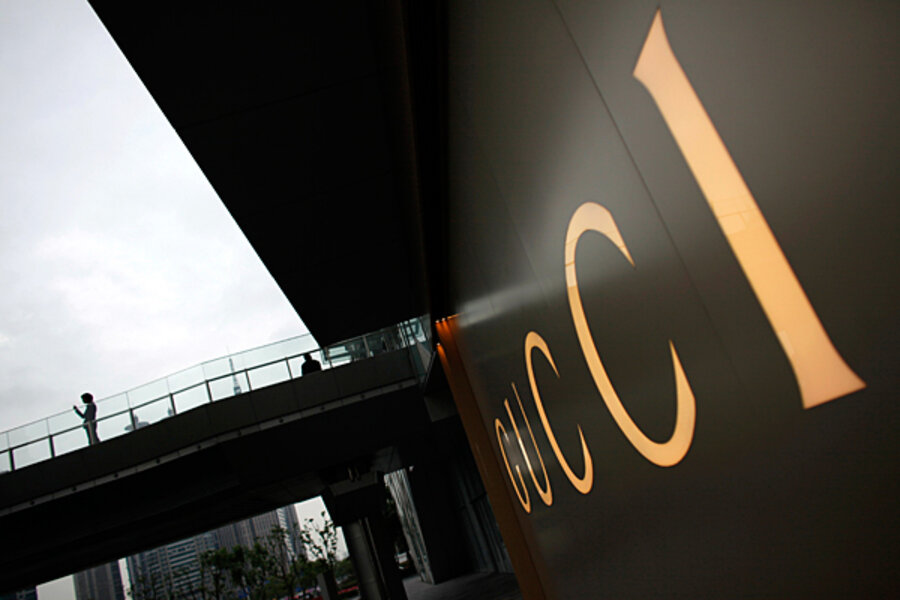Made in China: Why knockoffs disappeared from Beijing markets
| Beijing
For nearly 20 years foreign governments and corporations have been chastising the Chinese authorities for turning a blind eye to the counterfeiters who rip off foreign trademarks, from Gucci to Ugg.
For the most part, Beijing shrugged off those complaints like water from a duck’s back.
Then, all of a sudden in the middle of last month, the pirated DVDs, the fake Polo shirts, the knock-off Patek Philippe watches and all the other counterfeit brands that draw shoppers from around the world disappeared at a stroke from Beijing store shelves.
The Chinese government, it seemed, had undergone an overnight conversion, and was finally matching its pious pronouncements on the sanctity of intellectual property rights with some real enforcement.
“This is great news,” said Joe Simone, a trademark lawyer with Baker & Mckenzie in Hong Kong who has represented a group of Western brands fighting to protect their trademarks in China for nearly a decade. His lengthy experience, however, made him cautious. “It’s possible they’ve decided to go clean,” he added. “But I doubt it.”
Mr. Simone’s skepticism, it turned out, was justified. By Monday of this week, in markets across the city, the full panoply of illegal counterfeits was back on sale, as ever at very reasonable prices.
What had prompted the Chinese police to actually enforce the law for a little over two weeks? A meeting in Beijing of the World Intellectual Property Organization (WIPO), attended by more than 700 delegates from 154 nations, who were drafting an international treaty to protect audiovisual performances.
“There was a big meeting. Important people came from abroad,” explained one salesgirl at the fabled Silk Street Market in downtown Beijing who said she had been ordered by market managers to hide all her counterfeit jeans for two weeks. “Policemen came every day,” she said on Monday. “Now we’ve been told they won’t come back.”
Once again her racks hung thickly with fake Levis, Diesel, Dolce and Gabbana, and Armani jeans, on sale for about $15.00 a pair to a hard bargainer.
Another famous center for counterfeit goods, the Yashou Market was also doing business as normal Monday, after two weeks during which its stalls were thinly stocked with Chinese labeled goods. And a well known DVD store in the market, which had almost emptied its shelves during the WIPO conference on orders from the police, brought its pirated goods out of the back room to which customers had been directed during the clampdown.
China “remains the top source of counterfeits distributed worldwide” complained the International AntiCounterfeiting Coalition (IACC) of international brand owners in a report earlier this year to the US Trade Representative. The report cited “particular problems” with apparel, footwear, fashion accessories, pharmaceuticals, wine, food, portable phones, printer cartridges, batteries, cosmetics, condoms, and auto parts.
The most visible and well known example of the business is Beijing’s Silk Street Market, which the IACC calls “perhaps the most notorious of physical markets in China,” a six story warren of stalls selling replica Louis Vuitton handbags, fake iPhones, sham Tods moccasins, phony Rolex watches, bogus Paul Smith shirts, and a wide range of other counterfeited goods.
The market’s owners and the vendors who rent stalls from them have lost dozens of court cases brought over the past five years by brand owners suing for violation of trademarks. But the cases have led only to light fines, says Simone, and the offenders keep offending.
“The Silk Market is a symbol of China’s lack of political will” to clamp down on counterfeiting, Simone charges. “They let it happen.”
Zhang Yongping, president of the company that owns the Silk Street Market, insists that “we have respected intellectual property rights for a long time” and that “we have always educated our stall holders not to sell fakes.”
In an interview during the clampdown he explained the sudden lack of counterfeit goods on display as a result of his “large scale reforms” designed to “promote the Silk Market as a high class market” rather than a Mecca for the fakes that have made its worldwide reputation.
“If we or the [Beijing government’s] Administration for Industry and Commerce found stalls selling fakes, we kicked them out,” added Hu Wenli, the Silk Street Market’s general manager.
That explanation carried less weight the day after stall holders began selling counterfeits openly again, when Mr. Zhang – encountered by chance on a tour of the market Monday – said only that he was “inspecting for fake goods” before hurrying away from a reporter.
The IACC’s 2012 report welcomed some recent steps by the Chinese government to crack down on counterfeiting, including a 38 percent rise in criminal prosecutions of intellectual property violations last year according to Supreme Court figures.
“Have things got better?” asks Simone rhetorically. “Yes. Have things moved fast enough to stop” the trade in counterfeits? “No.”






